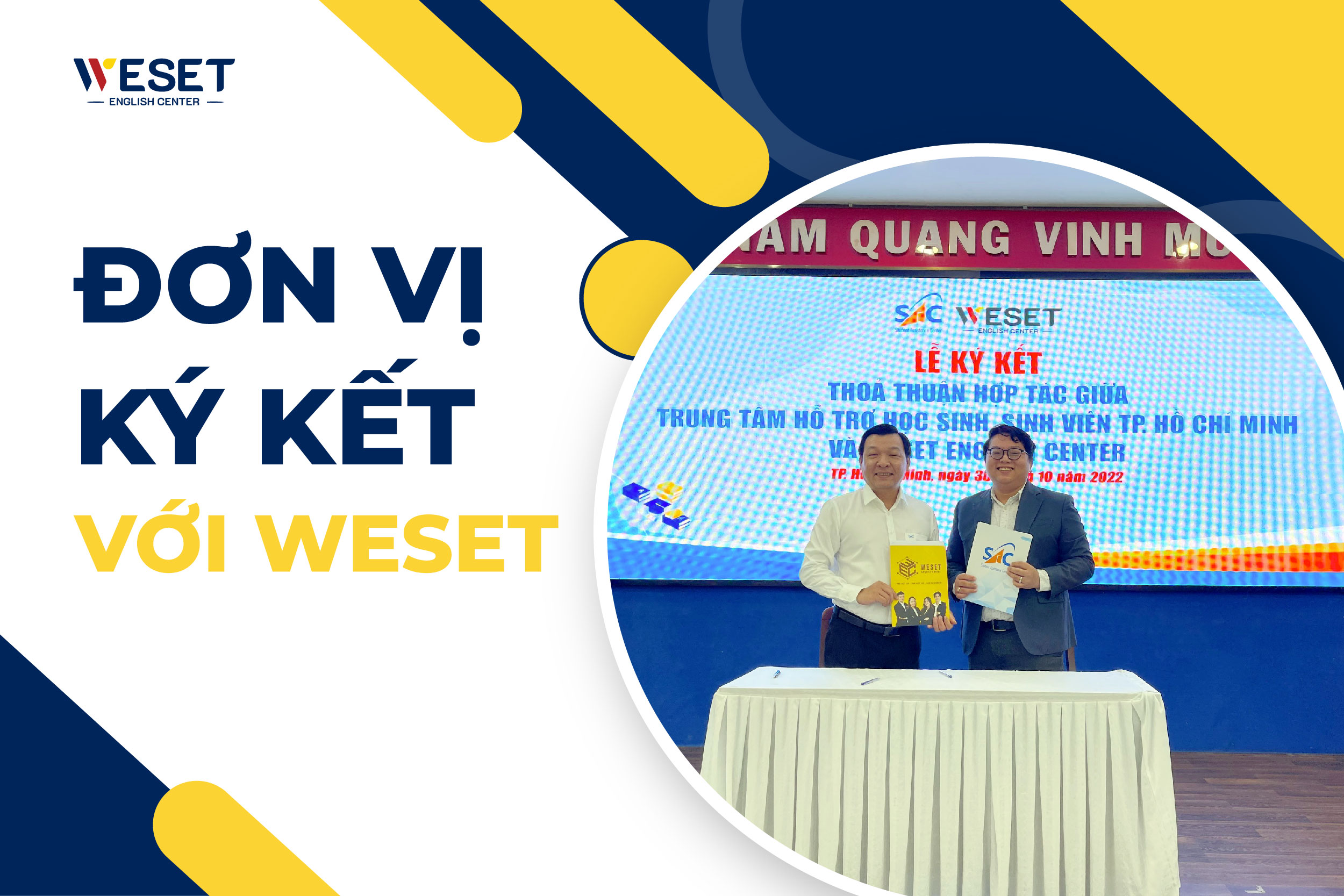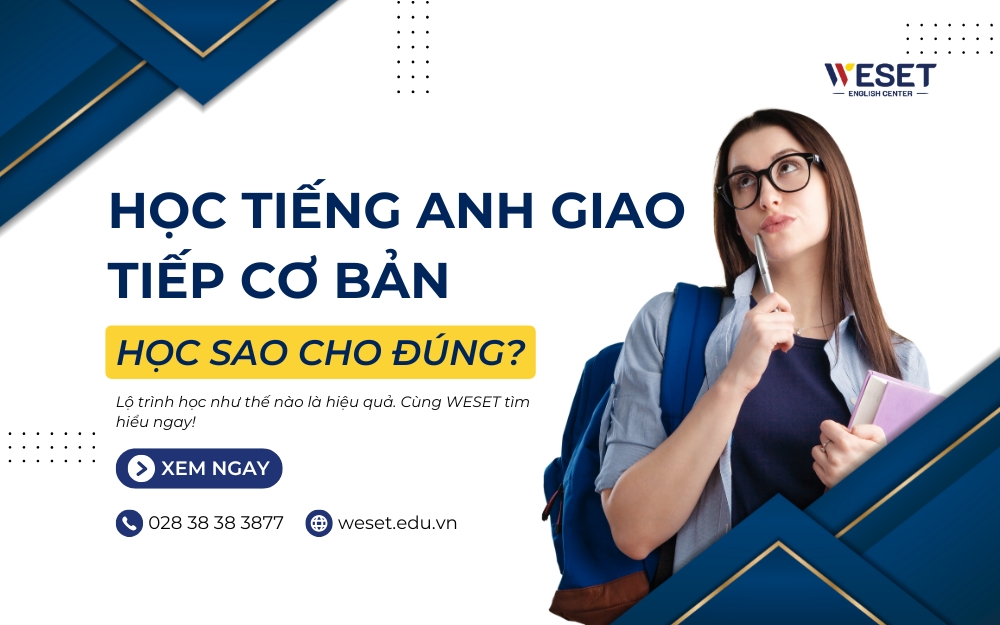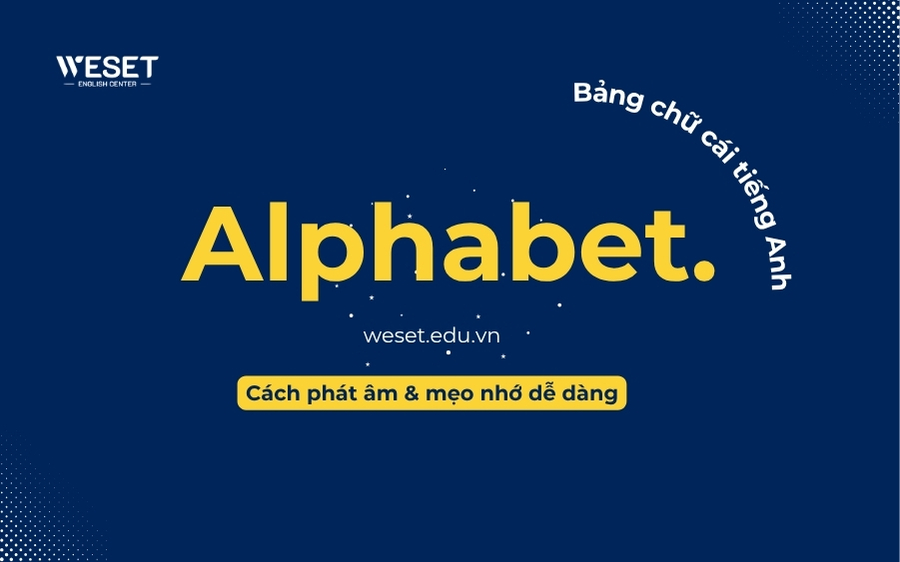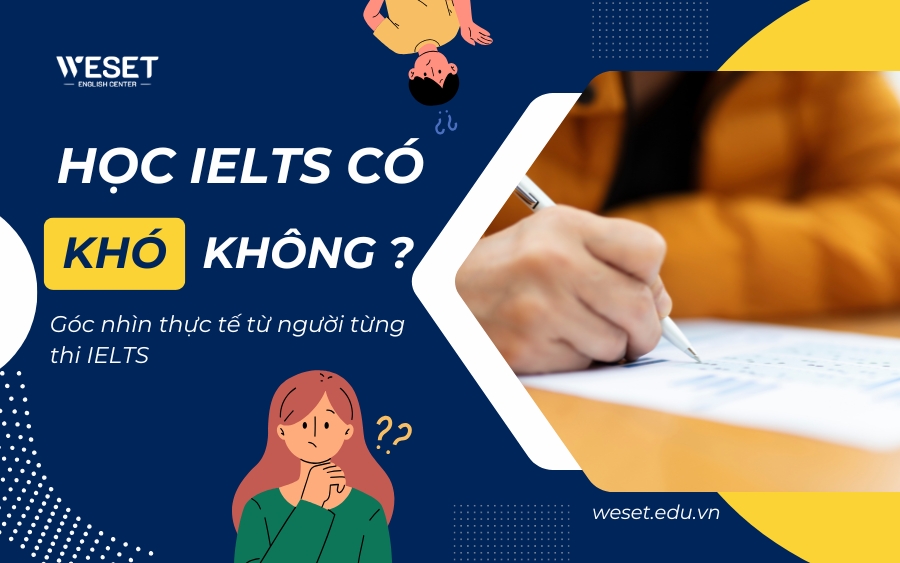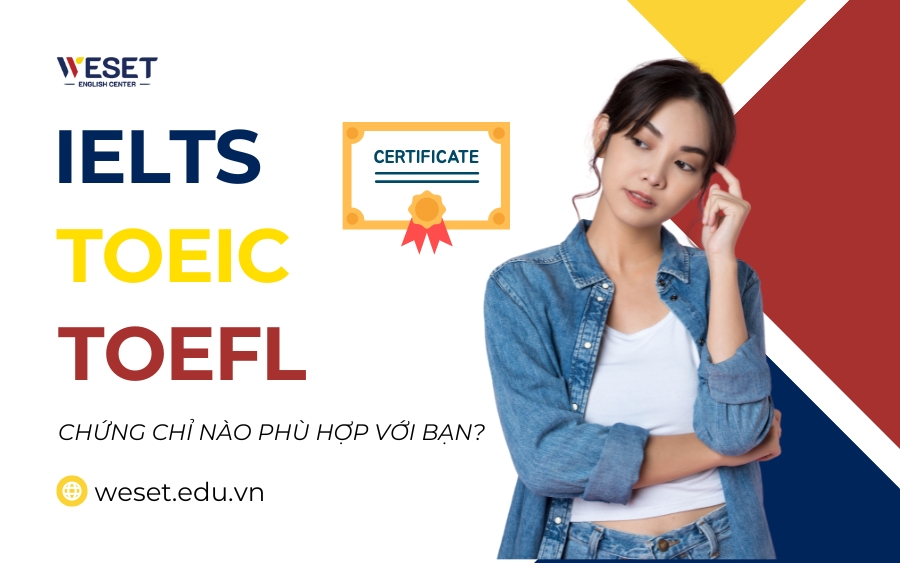Trang chủ Blog Bài thi IELTS mẫu IELTS Writing Task 2 Technology: Hướng dẫn & Bài mẫu
IELTS Writing Task 2 Technology: Hướng dẫn & Bài mẫu
- Jonathan M. Pham
- Bài mẫu IELTS Sample Writing, Bài mẫu Task 2 IELTS Writing sample, Bài thi IELTS mẫu
MỤC LỤC
Cùng với thời buổi bùng nổ công nghệ số hiện nay, không có gì ngạc nhiên khi Technology trở thành một trong những chủ đề hot của bài thi Writing. Hôm nay, với series bài mẫu Writing Task 2 của WESET, hãy cùng khám phá chi tiết hơn về cách làm topic IELTS Writing Task 2 Technology bạn nhé!
Phân tích topic IELTS Writing Technology
Một số subtopic thường gặp với chủ đề Technology trong IELTS Writing.
The Impact of Technology on Society (Tác động của Công nghệ đến Xã hội)
Thảo luận về việc công nghệ đã thay đổi các khía cạnh của xã hội như thế nào – ví dụ: giao tiếp, công việc, giáo dục – theo chiều hướng tích cực hay tiêu cực.
- Causes: Rapid technological advancements, increased accessibility to technology.
- Problems: Social isolation, job displacement, loss of privacy.
- Solutions: Promoting digital literacy, regulating technology use, fostering face-to-face interactions.
Digital Communication (Truyền thông Kỹ thuật số)
Khám phá các chủ đề như mạng xã hội, email và ứng dụng nhắn tin – ảnh hưởng của chúng đến các mối quan hệ cá nhân, kỹ năng giao tiếp, hoặc những lo ngại về quyền riêng tư.
- Causes: Widespread internet access, the convenience of digital communication.
- Problems: Reduced interpersonal skills, cyberbullying, privacy concerns.
- Solutions: Encouraging digital etiquette, teaching online safety, balancing digital and in-person communication.
Internet and Information (Internet và Thông tin)
Vai trò của Internet trong việc cung cấp thông tin chính xác, hỗ trợ giáo dục trực tuyến, tiếp cận thông tin và tầm quan trọng của kiến thức kỹ thuật số.
- Causes: Global internet connectivity, information sharing.
- Problems: Misinformation, data breaches, digital divide.
- Solutions: Promoting digital literacy, fact-checking, bridging the digital divide through affordable internet access.
Smartphones and Gadgets (Điện thoại thông minh và Tiện ích)
Bàn luận về sự phổ biến của điện thoại thông minh và các thiết bị kỹ thuật số – tác động của chúng đối với cuộc sống, sức khỏe hoặc môi trường.
- Causes: Technological innovation, consumer demand.
- Problems: Addiction, distraction, electronic waste.
- Solutions: Digital detox programs, using technology mindfully, recycling and responsible disposal of electronics.
Privacy and Security (Quyền riêng tư và bảo mật)
Khám phá các vấn đề liên quan đến quyền riêng tư dữ liệu và an ninh mạng – sự cân bằng giữa quyền riêng tư và an ninh quốc gia, cũng như trách nhiệm của các cá nhân và tổ chức.
- Causes: Increasing data collection, cyber threats.
- Problems: Data breaches, identity theft, surveillance concerns.
- Solutions: Stronger data protection laws, cybersecurity education, using encryption technologies.
Artificial Intelligence – Trí tuệ nhân tạo (AI)
Đi sâu vào những tiến bộ trong công nghệ AI và ứng dụng thực tế, cùng các mối lo ngại về đạo đức.
- Causes: Advances in machine learning, data availability.
- Problems: Job displacement, biased algorithms, ethical concerns.
- Solutions: Reskilling and upskilling programs, ethical AI guidelines, transparency in AI development.
Environmental Impact of Technology (Tác động đến môi trường)
Phân tích xem công nghệ ảnh hưởng như thế nào vào các vấn đề môi trường, chẳng hạn như rác thải điện tử, tiêu thụ năng lượng và các giải pháp công nghệ bền vững.
- Causes: Energy-intensive technology, resource extraction.
- Problems: E-waste, pollution, climate change.
- Solutions: Sustainable technology design, recycling programs, energy-efficient practices.
Medical and Healthcare Technology (Công nghệ y tế và chăm sóc sức khỏe)
Thảo luận về vai trò của công nghệ trong chăm sóc sức khỏe, bao gồm điều trị từ xa, thiết bị y tế và tiềm năng cải thiện hiệu quả điều trị.
- Causes: Medical advancements, technology integration.
- Problems: Privacy issues, unequal access, reliance on technology.
- Solutions: Strict patient data protection, improving healthcare access, balancing technology with human care.
E-commerce and Online Shopping (Thương mại điện tử và Mua sắm trực tuyến)
Khám phá sự phát triển của nền tảng thương mại điện tử và tác động đối với các doanh nghiệp bán lẻ truyền thống, hành vi của người tiêu dùng và nền kinh tế.
- Causes: Internet commerce growth, convenience.
- Problems: Brick-and-mortar store closures, counterfeit products, data breaches.
- Solutions: Supporting local businesses, stricter e-commerce regulations, secure payment methods.
Transportation and Mobility (Giao thông vận tải)
Xem xét những tiến bộ công nghệ trong giao thông vận tải, chẳng hạn như xe điện, xe tự hành và tiềm năng của chúng trong việc giảm tắc nghẽn giao thông và tác động tới môi trường.
- Causes: Autonomous vehicles, eco-friendly transportation.
- Problems: Job displacement, traffic congestion, infrastructure challenges.
- Solutions: Retraining displaced workers, investing in public transportation, improving road infrastructure.
Space Exploration and Technolog (Khám phá Không gian và Công nghệ)
Thảo luận về vai trò của công nghệ trong việc khám phá không gian, lợi ích của nghiên cứu không gian và tiềm năng trong tương lai.
- Causes: Scientific curiosity, technological advancements.
- Problems: Costly missions, space debris, resource exploitation.
- Solutions: International collaboration, sustainable space policies, responsible resource management.
Education Technology – Công nghệ Giáo dục (EdTech)
Xem xét việc sử dụng công nghệ trong giáo dục, bao gồm đào tạo trực tuyến, lớp học từ xa, ưu – nhược điểm của EdTech.
- Causes: Online learning demand, technological capabilities.
- Problems: Inequalities in access, loss of traditional teaching methods, student isolation.
- Solutions: Ensuring equitable access to EdTech, teacher training, combining online and offline learning approaches.
Đề bài mẫu topic IELTS Writing Task 2 Technology
Question:
“In recent years, there has been a significant increase in the use of smartphones and other electronic devices. Some people argue that this trend is having a negative impact on social interaction. To what extent do you agree or disagree with this view? Provide reasons and examples to support your opinion.”
Phân tích đề bài:
- Topic: Technology
- Subtopic: The Impact of Technology on Social Interaction
- Dạng bài: Opinion/Agree or Disagree
- Task: To what extent do you agree or disagree
Mở bài:
- Đề cập đến chủ đề (điện thoại thông minh và thiết bị điện tử).
- Nêu vấn đề (tác động tiêu cực đến tương tác xã hội).
- Trình bày quan điểm/ thesis statement (đồng ý).
Thân bài 1:
- Trình bày lý do ủng hộ quan điểm (điện thoại thông minh đã cách mạng hóa giao tiếp).
- Đưa ra ví dụ cụ thể (tin nhắn tức thời, cuộc gọi điện video) để minh họa quan điểm.
Thân bài 2:
- Nêu ra một lý do khác củng cố thêm luận điểm (các thiết bị điện tử giúp tăng cường sự hợp tác và kết nối qua mạng).
- Cung cấp các ví dụ cụ thể (LinkedIn, mạng lưới chuyên nghiệp).
Thân bài 3:
- Thừa nhận lập luận phản bác (thời gian sử dụng thiết bị quá nhiều có thể làm giảm sự tương tác trực tiếp).
- Trình bày qua về lập luận phản bác (công nghệ có thể là yếu tố thúc đẩy).
- Đề xuất giải pháp (cá nhân nên cân bằng giữa tương tác vật lý và kỹ thuật số).
Kết luận:
- Tóm tắt những điểm chính.
- Khẳng định lại luận điểm.
Bài mẫu IELTS Writing Task 2 Technology – Sample answer
In the contemporary era, smartphones and electronic devices have become ubiquitous, fundamentally altering the way we communicate and interact. While some contend that this surge in technology is eroding traditional forms of social interaction, I firmly believe that it has opened new avenues for connection and communication.
To begin, it is important to acknowledge that smartphones have revolutionized the way we communicate. Instant messaging applications and social media platforms enable individuals to stay connected across vast distances, fostering relationships that might otherwise wane due to geographical barriers. For instance, video calls facilitate face-to-face conversations, making it possible to maintain close ties with loved ones regardless of physical separation.
Moreover, electronic devices serve as powerful tools for collaboration and networking. In professional settings, platforms like LinkedIn enable individuals to expand their professional networks, opening up opportunities for career growth and knowledge-sharing. This interconnectedness transcends borders and time zones, fostering a global community of professionals with shared interests and goals.
While it is true that excessive screen time can lead to diminished face-to-face interactions, it is essential to view technology as an enabler rather than a hindrance. The onus lies on individuals to strike a balance between digital and physical interactions, ensuring that both forms of communication complement each other rather than compete.
In conclusion, the proliferation of smartphones and electronic devices has undeniably transformed the landscape of social interaction. However, rather than undermining traditional forms of communication, technology has augmented our ability to connect with others. It is imperative that individuals harness the potential of these devices judiciously, recognizing them as tools that can enhance, rather than replace, meaningful social interactions.
Một số đề bài mẫu IELTS Writing Task 2 Technology khác
Sample 1
Subtopic: Artificial Intelligence (AI)
Question Type: Advantage and Disadvantage
Question:
“Advancements in artificial intelligence (AI) have the potential to revolutionize various industries, from healthcare to finance. Discuss the advantages and disadvantages of AI’s growing role in society. Provide examples to support your points.”
Sample Answer:
In recent years, artificial intelligence (AI) has emerged as a transformative force with the capacity to reshape numerous sectors. While the advantages of AI integration are manifold, there are also noteworthy disadvantages to consider.
On the positive side, AI has the potential to greatly enhance efficiency and accuracy across industries. In healthcare, AI-powered diagnostic tools can rapidly analyze medical images and patient data, leading to faster and more accurate diagnoses. In the financial sector, algorithms can predict market trends and optimize investment strategies, offering significant economic benefits.
However, the widespread adoption of AI brings certain challenges. One primary concern is the potential loss of jobs, particularly in sectors where automation is prevalent. For instance, self-driving cars may revolutionize transportation but could displace millions of drivers from their jobs. Additionally, there are concerns about AI’s decision-making processes, which can sometimes result in biased or unethical outcomes, such as discriminatory lending practices in the banking sector.
In conclusion, AI’s growing role in society offers numerous advantages in terms of efficiency and innovation. However, the potential for job displacement and ethical dilemmas highlights the need for careful regulation and thoughtful integration of AI technologies.
Sample 2
Subtopic: Internet and Information
Question Type: Discussion
Question:
“The internet has democratized access to information, but it has also given rise to fake news and misinformation. Discuss the impact of the internet on the availability of information and the challenges posed by misinformation. Provide your insights and examples.”
Sample Answer:
The internet’s role in providing access to information is undeniable, but it has also presented society with the challenge of combating misinformation. This complex issue warrants a thorough discussion.
The internet has democratized information, empowering individuals to access a vast repository of knowledge with unprecedented ease. Educational resources, news articles, and research papers are readily accessible, enabling self-directed learning and informed decision-making. This open access to information has fostered a more informed citizenry and contributed to social progress.
However, the internet’s free flow of information has a downside: the proliferation of misinformation and fake news. In an era of user-generated content, anyone can disseminate information, often without fact-checking or accountability. This has led to instances where false narratives gain traction, undermining trust in credible sources.
For instance, during the COVID-19 pandemic, false information about cures and prevention methods spread rapidly online, endangering public health. Addressing this issue requires a multifaceted approach, including media literacy education, fact-checking initiatives, and responsible content moderation.
In conclusion, the internet’s impact on information availability is a double-edged sword. While it democratizes access to knowledge, society must grapple with the challenge of mitigating misinformation to ensure that the benefits of information access are not outweighed by its risks.
Sample 3
Subtopic: Privacy and Security
Question Type: Problem and Solution
Question:
“The increasing collection of personal data by tech companies and government agencies has raised concerns about individual privacy. Discuss the privacy issues related to data collection and propose potential solutions to protect individuals’ privacy rights.”
Sample Answer:
The pervasive collection of personal data in the digital age has ignited a critical debate surrounding individual privacy. While data collection is integral to technological advancements, it is essential to address privacy concerns and propose solutions to safeguard individuals’ rights.
One of the primary privacy issues stems from the extensive data gathering practices of tech companies and government agencies. From online shopping preferences to location data, vast amounts of personal information are collected, often without explicit consent. This data can be exploited for targeted advertising or surveillance, raising valid concerns about invasive intrusion into individuals’ lives.
To address these concerns, several measures can be implemented. Firstly, legislation should be enacted to ensure transparency and user consent regarding data collection. Companies and government entities should be required to obtain explicit consent from individuals before collecting their data. Additionally, robust data protection regulations, such as the European Union’s General Data Protection Regulation (GDPR), can serve as a model for safeguarding privacy.
Furthermore, individuals can take steps to protect their privacy, such as using encryption tools, regularly reviewing app permissions, and opting for privacy-oriented services. Educating the public about privacy risks and best practices is also crucial.
In conclusion, while data collection is essential for technological progress, it must not come at the expense of individual privacy. Legislation, user consent, and public education are essential components of a comprehensive solution to protect individuals’ privacy rights in the digital age.
Từ vựng IELTS Writing Task 2 Technology Vocabulary
| English Vocabulary | Vietnamese Translation |
|---|---|
| Advancements in technology | Sự tiến bộ trong công nghệ |
| Artificial intelligence | Trí tuệ nhân tạo |
| Automation | Tự động hóa |
| Data collection | Thu thập dữ liệu |
| Digital communication | Giao tiếp số hóa |
| Information access | Truy cập thông tin |
| Internet connectivity | Kết nối internet |
| Misinformation | Thông tin sai lệch |
| Online learning | Học trực tuyến |
| Personal data | Dữ liệu cá nhân |
| Privacy concerns | Mối quan tâm về quyền riêng tư |
| Social interaction | Tương tác xã hội |
| Technological innovation | Đổi mới công nghệ |
| User-generated content | Nội dung do người dùng tạo ra |
| Data protection regulations | Quy định bảo vệ dữ liệu |
| Cybersecurity | An ninh mạng |
| Ethical concerns | Mối quan tâm về đạo đức |
| Digital literacy | Kiến thức số hóa |
| Information sharing | Chia sẻ thông tin |
| Privacy-oriented services | Dịch vụ tập trung vào quyền riêng tư |
Lời kết
Trên đây là hướng dẫn làm bài kèm bài mẫu & từ vựng gợi ý cho topic IELTS Writing Task 2 Technology. Nếu bạn đọc quan tâm và muốn nâng cao kỹ năng cá nhân, hãy dành thời gian xem qua thư viện bài mẫu của WESET – cũng như đăng ký nhận tin và tham khảo các khóa học IELTS theo lộ trình của trung tâm bạn nhé!
Bài mẫu Sample Writing theo chủ đề khác:

